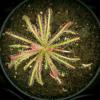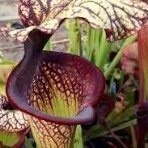-
Posts
940 -
Joined
-
Last visited
-
Days Won
18
Dieter last won the day on December 1 2016
Dieter had the most liked content!
Profile Information
-
Location
Offenbach am Main, Germany
-
Interests
CPs
Recent Profile Visitors
7,960 profile views
Dieter's Achievements
90
Reputation
-

How long does it take for Drosera seeds to germinate?
Dieter replied to Yossu's topic in General Carnivorous Plant Discussion
Yes, 4 weeks is a good ballpark figure for many of the well distributed species. Just in case you would like to see other examples: This winter germinated some potential pygmy Drosera hybrid seeds for me. The seeds were sown in late 2012 or 2013. Same experience for certain tuberous Drosera seeds. This is the reason for my general reply above. But there are enough examples in both Drosera groups which germinate much faster than this... Cheers Dieter -

How long does it take for Drosera seeds to germinate?
Dieter replied to Yossu's topic in General Carnivorous Plant Discussion
The extremely general question in your headline can easily be answered: somewhere in the range of few days to several years. The two species you mention in your post usually germinate for me within a few weeks (2-5 weeks to give an estimate). However, the temperature may also play a role. Best regards Dieter -
Dear all, I started off a post in the German forum to let the users identify the parents of a new hybrid which germinated in the winter 2014/2015 and now started to flower. The flower morphology (bot not the colouration) seems to be dominated by the seed parent, which I like very much. You will have it a little easier and do not need to guess which species might be the parent of this one, even though I think that is an interesting excercise. I start with two pictures from last summer, the seedling being roughly half a year old and forming a few gemmae as result of the adaption to the conditions in my "wintergarden". The plant has grown a lot larger since then. Finally, in the second week of March, I found first signs of an inflorescence. Two more weeks later one could guess the flower colour. I missed the first open flowers during the easter weekend and found a third one still open when I came back from work on Thursday. It was already getting dark (but surprisingly the flower was still wide open) and therefore the conditions for taking a picture were pretty bad. Yesterday, I finally had the luck to be at home, have nice conditions for taking pictures and even 2 open flowers: For comparison a pretty old picture from the seed parent: Another old picture, now the pollen parent: I hope you like the hybrid. At least I do very much so :-) Cheers Dieter P.S. Yes, some (but very few) of you are waiting for an email reply. I have not forgotten or ignore, I just had very little spare time recently.
-
Dear all, the plant I grow as clone 2 from that location started extremely early in the flowering season. The pictures below were taken end of January. The scapes were extremely short so that it seemed that the flowers directly emerged from the top of the plant. Meanwhile, the scapes have grown in length, so they look a bit more normal. As I obtained this form as gemmae nearly a year ago, I am not sure whether this very early flowering pattern is a consistent behaviour or just an outlier. The only other species I currently have in flower is the D. eneabba and a first D. citrina. I offered this form as "Frenchman Peak, clone 2" during the gemmae season. Those of you, who obtained a portion now can add the information that it is a white flowered form. Best regards Dieter
-
Lovely :-) Best regards Dieter
-
Hi John, thanks for sharing pictures of this species. I should be able to add flower pictures soon. I find it interesting that you write that you observe sometimes the formation of an additional tuber. I actually got the impression that this species is quite good at forming extra tubers. However, I have years in which no plants appear at all and I fully agree that this is not an easy species, at least not for me. Best regards Dieter
-
Hi jp, great plants and great pictures! Your D. erythrorhiza forms quite a few leaves. I observed for my D. erythrorhiza var. imbecilia that fertilized plants produced more than the typical 3-4 leaves whereas the non-fertilized plants stick to the 3-4 leaves (probably because they unerstood the species description better than I do). Do you observe something similar? thanks for sharing Dieter
-
Hi Lucien, I can only agree with the others: great plants!!! Best regards Dieter
-
Dear all, I know it has been a while since I posted some pictures. Sorry for that. I just do not have as much time as I would need to get everything done. I also know that some of you are still waiting for a reply of some sort (email or pm). I work on that as well :-) At least I took some time to sort through the pictures I took during the past 2 months or so. Here are some of them. More can be found on my website. As a starter I would like to show the two new species in the macrantha family with their typical features. Here is D. hirsuta (starting with pictures from mid of November): The lower stem section is completely free of hairs (glabrous). Later in the season the plant will develop an intensely hairy stem. The plant below shows now the first sign of those hairs. Four weeks later the hairs are much more intense: This is a picture taken earlier today: By the way, this is the pink flowered form. There also is a white flowered form which comes with colourless (instead of red) hairs. However, I do not grow that one yet, so I can not offer any pictures. The second new species is D. indumenta. The name is derived from the indumentum which is covering the stem along its entire length. Actually, this species is very easy to identify in my opinion as no other species looks even similar. the two pictures I selected here are showing different clones growing under the same conditions in the same tray and the pictures were taken at the same day. The second plant obviously is more advanced as it appeared a few weeks earlier. The hairs are not as obvious but still very good to see. Now some rosetted species: the first one is a species which already last year produced several additional rosettes during the season and apparently is up to do the same again: To my surprise I found an open flower in a pot where I would not have expected one for the rest of the season. It is a second rosette emerging underneath the first one. The plants in the macrophylla family are also starting their flowering season now. I have to admit that I did not take pictures of the lovely hybrid of both species yet, which I obtained from jp a couple of years back (already as flowering size tubers). I will try to add those later. Here is a D. macrophylla getting ready to flower soon: A little further advanced is a D. aff. monantha, which forms very large rosettes (up to 10 cm according to Allen) and 1-3 flowers per flower stalk: This pot measures 11x11 cm, so the plant has not yet reached its full size. A little bit off-topic I add a picture of my R. gorgonias which is getting ready to flower as well. That is far from being the normal behaviour but it shows how warm the winter was so far. And you will also see that we had great weather on December, 24th! Cheers Dieter
-
Hi David, I suggest the cool conditions in the green house. My plants get about 10 h photoperiod. Best regards Dieter
-
Hi Maurizio, nice plants! Best regards Dieter
-
Congratulation on the germination! Your stratification obviously worked well. In my conditions D. trinervia is not really among those species which need at long time to germinate. Anyway, just in case you are wondering: the mix may contain seeds of D. stolonifera, D. browniana, D. whittakeri and/or D. aberrans (all of which are more or less round seeds, the D. whittakeri and/or aberrans seeds were obvious as they were larger and do not roll well) plus D. basifolia, D. auriculata and potentially also D. zigzagia (lenghty seeds). I do not fully remember. The mix was not made by accident: One day, when I came home, someone had put the tray with the seed packets away and did obviously do so with lots of energy so that many seed packets had lost some of their contents. As this happened relatively early ( I think in January), the seeds in the mix will mostly be those species which had flowered early in the previous season. I agree with Sean: many D. macrantha are among the first to appear. Usually, D. (aff.) pallida is even earlier in my conditions. If I have a little time, i will also take some pictures as now some D. tubaestylis start to flower, which always is lovely! Best regards Dieter
-
Nice plants! In case of the D. gracilis I am not so sure the ID is correct. I would expect it to be much redder. Is it possible this is a D. hookeri? Best regards Dieter
-
My experience with repotting as well as shipping D. burmannii bar root is that there may be some losses in both cases, but many plants will recover and - due to their fast growth - will look beautiful a short time after arrival or repotting. Best regards Dieter
-
Dear all, as I had severe problems accessing and posting in this forum, these pictures are posted a little later than I did in the GFP forum. Nevertheless, I hope they will be of interest for you anyway. As it is still early in the season, there are only rosetted species starting to flower now. This year, two species made in nearly at the same time, but one D. whittakeri form from Onkaparinga Gorge won the contest by 2 days. D. praefolia followed a few days later. As it seems, at least 3 of my D. praefolia plants flower this season. :-) A few days later I had the pleasure to find 7 open D. praefolia flowers: Hallo zusammen, As you can see, only few of the flowers have 5 petals. I do not grow this species long enough to judge wether this is normal or not. At least it is interesting. You will find even more pictures on my website. Cheers Dieter





